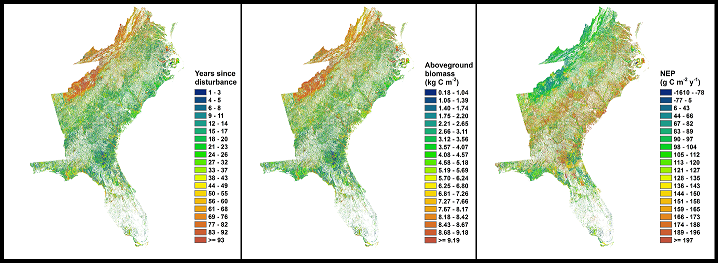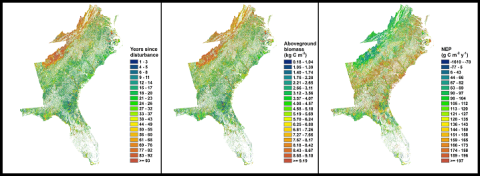Forest Carbon Stocks and Fluxes After Disturbance, Southeastern USA, 1990-2010
This dataset from the Carbon Monitoring System (CMS) provides estimates of forest carbon stocks and fluxes in the form of aboveground woody biomass and net ecosystem productivity, as a function of the number of years since the most recent disturbance (i.e., stand age) for forests in the southeastern USA at a 30 m resolution for the benchmark years 1990, 2000, and 2010. The study area includes Virginia, North Carolina, South Carolina, Georgia, and Florida. Estimates were derived from an inventory-constrained version of the Carnegie-Ames-Stanford Approach carbon cycle process model and uses the data inputs from the North American Forest Dynamics, the Aerial Detection Survey, the Monitoring Trends in Burn Severity data products, and the National Biomass and Carbon Dataset.
NASA's CMS program is designed to make significant contributions in characterizing, quantifying, understanding, and predicting the evolution of global carbon sources and sinks through improved monitoring of carbon stocks and fluxes. The System uses NASA satellite observations and modeling/analysis capabilities to establish the accuracy, quantitative uncertainties, and utility of products for supporting national and international policy, regulatory, and management activities. See all ORNL DAAC data from CMS.
Data Citation: Gu, H., C.A. Williams, N. Hasler, and Y. Zhou. 2019. Forest Carbon Stocks and Fluxes After Disturbance, Southeastern USA, 1990-2010. ORNL DAAC, Oak Ridge, Tennessee, USA. https://doi.org/10.3334/ORNLDAAC/1728
Data Center: ORNL DAAC
Sponsor: EOSDIS


